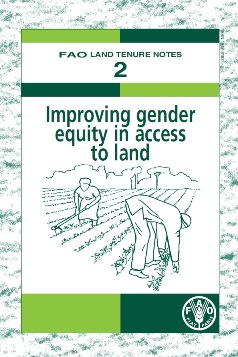Resource information
Securing the rights of both women and men to land is essential for sustainable rural development, social equity and economic growth. Today women are the major agricultural producers at the household level. Yet their rights are often marginalized and can be lost in development projects unless gender-inclusive practices are implemented. This guide focuses on gender relations and how their structure may affect access to land. It is designed primarily to support non-governmental organizations (NGOs) but may be useful for local government officials and others who work with farmers and rural households. The guide provides information on “good practices” for gender inclusion.
It presents information that NGOs and project staff can share so that people can have a better understanding of their rights to land. Two important questions to answer are “what do we mean by access to land” and “why is gender important?” This guide begins with these questions and with some of the answers that can be adapted to local situations. Access to land can mean many things in different societies and its complexity is often underestimated in projects designed for the rural poor. Gender issues are sometimes controversial because they are rooted in culture, tradition, religion, and various sources of law. Men and women are often not well informed about their legal rights; neither do they usually understand the inequities and inefficiencies related to gender and access to land. Being able to answer these questions is a starting point in developing appropriate strategies to improve access to land for both men and women.
You can download this publication from the FAO website.

